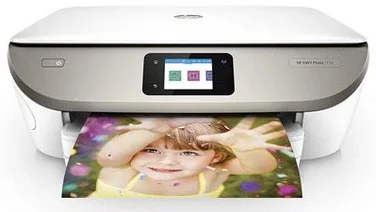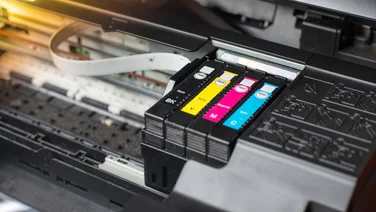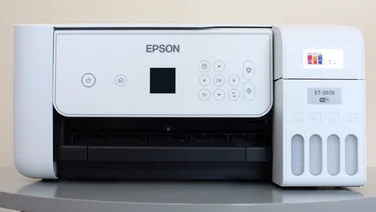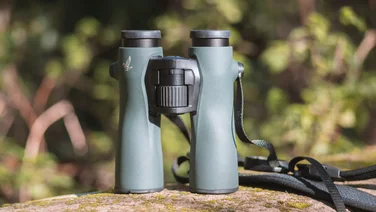To help us provide you with free impartial advice, we may earn a commission if you buy through links on our site. Learn more






- Lightweight
- Great for beginners
- Good image quality
- ISO controls are finicky
- No audio-in jack
- No manual/autofocus button
The two-year-old Nikon D3400 is dead, long live the D3500. Propping up the foot of Nikons DSLR offerings, with a price to match, the D3500 is the model Nikon hopes will tempt newcomers away from the crop of superb mirrorless cameras.
Nikon D3500 review: What you need to know
If you already have a D3400, this probably wont be the camera for you, simply because of the limited number of improvements the D3500 actually offers. Its about 30g lighter, shoots about 300 more images per battery charge (an improvement of about 25% over the D3400), and the control dial has moved from the back of the D3400 to the top of the D3500.
But if youre looking for a small, cheap DSLR that will hold your hand while you figure out the ins and outs of photography, the D3500 like most of Nikons previous entry-level DSLRs could be well worth the cash.
Nikon D3500 review: Price and competition
There are a few variants of the D3500, at least in terms of what comes in the box. The best value option is the one that comes with Nikons optically stabilised, 18-55mm kit lens. As prices have tumbled dramatically since the D3500s release, this package will set you back around £300. You can save a few quid by opting for the non-stabilised version, or for the camera body-only, but neither is significantly cheaper.

Theres plenty of competition at this price. Canons EOS 2000D is worth a look, albeit at the cost of about 100g more weight. Canons offering also cant hold a candle to the D3500 in terms of battery life, offering just 500 shots; youll get a thousand more from the Nikon.
Nikon D3500 review: Features and design
We might scoff at the D3500s relatively small weight reduction compared to the D3400, but in truth its out-of-the-box weight of just 415g is actually really impressive. Its only 124mm wide, which means in all its not that different in the hand or on the shoulder as many mirrorless cameras. Its a major thinking point for those who hold the opinion that mirrorless cameras have sounded a death knell for the DSLR.
The grip is reasonably deep, and even those with shovels for hands will have no problem finding a comfortable grip on the camera. The rubber cover on the grip isnt exactly the last word in luxury but at the very least this isnt a camera that will slip out of your hands. While were on build quality, neither the battery nor memory card doors feel particularly bomb-proof: its worth making sure theyre securely closed before stuffing the D3500 in a bag.

Compared to many DSLRs the screen a 3in, 921k-pixel affair that neither tilts nor pivots is frill-free. Its not touch-sensitive either, but is bright, clear and makes easy work of getting your settings figured out. Our only major bugbear is that theres no sensor to tell the screen to shut off when you lift the camera up the screen turns off when you half press the shutter button but is otherwise on all the time unless you turn it off manually. If you havent come to expect this from using other cameras you might not even notice, but for seasoned shooters its a definite hallmark of the D3500s budget position.
The D3500s battery is a strong point. Fully charged, it will fire 1,500 exposures; around 300 more than the D3400 this camera replaces. Compare it to Canons similarly-priced 200D and the Nikon shoots over 800 more images per charge. If you want a camera that will last a long time in places you dont have a lot of dependable electricity, its hard to name anything better.
Connectivity except for the obvious comes courtesy of Bluetooth 4.1. In combination with Nikons SnapBridge app, you can download images from the camera to a smart device, as well as performing the arguably more useful trick of syncing your phones time with the cameras useful for travellers who never remember to reset their cameras clock. The Bluetooth connection also provides geo-tagging for images.
However, videographers should note the lack of a mic-in socket at this price it doesnt seem so unreasonable to want one.
Nikon D3500 review: Ease of use
Otherwise, the D3500 is a very usable little beast. The buttons are a little clicky but easy to hit, and the control dial on the rear of the top of the camera feels positive, so youll be able to use it even if youre wearing gloves.
The cost of a camera seems to have a direct impact on the number of buttons on the body, so were disappointed if not surprised to note that the Fn button present on the front of other Nikon cameras and normally assigned to changing the ISO is missing here.
This is an annoyance, as it means theres no direct way to access the D3500s ISO setting, so those looking to learn how to use manual mode will either be stuck fiddling (quick menu button, five presses of the direction pad, OK, then choose the ISO you want), or stuck with auto ISO mode. Once youre in the ISO menu you cant even whistle through the options using the control dial on the top of the camera; you have to repeatedly stab the direction pad. Those with experience of manual modes might further note ISO can only be changed in whole-stop increments. Theres no depth of field preview button either.
The omission of an ISO shortcut key is a shame, not least because the D3500 is a really good camera for those looking to up their game, or progress from smartphone photography to something a little more advanced. The Guide setting on the mode dial for example, is a very useful way to figure out how the visual effect you want a blurred background for example, relates to which camera settings. Its a really useful, integrated way of telling the camera roughly what youre doing shooting sports, for example and having it make an educated guess as to what the settings should be. We also like and this is a minor thing how the icon representing aperture on the back of the camera changes size as you stop down.
Downloading images from the camera to a smartphone is useful for those who want to be able to share DSLR images directly from their smart device, although we found transferring full-size images took absolutely forever attempting to copy a full-size, top-quality JPEG weighing in at 11.7MB tested our commitment and we stopped the timer at three minutes with the transfer incomplete. Taking the apps suggestion to downsize the image to two megapixels before transferring produced a more manageable transfer time of 16 seconds.
Nikon D3500 review: Photo quality
Of course, the only reason to buy a DSLR ahead of a smartphone is image quality, so while the D3500 might offer a few compromises here and there on features and controls, weve no qualms when it comes to image quality. Its APS-C sensor weighs in with 24.78 megapixels pretty much the most youll get on an APS-C camera of any price. Nikon has done away with the anti-aliasing filter in the name of sharper images, although of course this will be heavily dependant on the lens you attach to the front of the camera.






Speaking of which, we had the chance to test both Nikons 18-55mm VR and non-VR lenses youll save about £20 by buying the non-VR version. Testing both revealed very consistent image quality, which is to say neither lens is any great shakes when shot at its maximum aperture. Things sharpen up a little as you stop down, with the VR lens showing a slight edge in terms of sharpness. Neither suffered from vignetting but even so if youre serious about learning your trade as a photographer, a decent zoom lens is likely to be top of your list.
Strangely, neither lens nor the body of the camera has a switch to flick between automatic and manual focus: again youre forced to flick through the menu to turn autofocus on and off. Thats not all the VR version doesnt have a switch to turn off image stabilisation, which will possibly annoy some tripod users.






Keep the ISO under control and the cameras image quality is only limited by the lens you attach. Colours were always accurate and, natch, you can always opt to shoot RAW files to gouge the maximum from your files in post-production.
ISO performance is very good. The range from ISO 100-800 produced test images that were more or less indistinguishable from each other, and noise at ISO 1600 was pretty nicely controlled certainly well enough to expect good quality prints. Beyond ISO 1600 things inevitably got muddier, with ISO 6400 probably being the usable maximum. ISOs 12,800 and 25,600 are effectively party-pieces for emergency only. It was while we were shooting our test ISO images, incidentally, that we re-discovered one of Nikons more annoying bugbears: set the self-timer, shoot an image, and the camera resets to burst mode after the image is taken.
One final area the D3500 elevates itself above its competition is its burst mode 5fps is very respectable. It might not be enough to cover a professional sporting event, but for portraits and events its pretty good. The buffer is limited: in JPEG mode we found the burst mode was good for 15 images, followed by a fairly lengthy digestion process. In RAW mode we could only shoot eight frames continuously before the camera paused to process.
Nikon D3500 review: Video quality
In a way its disappointing that the D3500 doesnt come with an audio-in jack, because its a very competent performer in terms of video. Theres a good range of options for mid-range video makers, with the D3500 offering 1080p in 60, 50,30, 25 and 24fps. You dont get 4K and you dont get high enough frame-rates to shoot slow-motion but for general blogging duties the options, plus the shallow depth of field produced by the reasonably big sensor, easily suffice.






Usability for beginners is straightforward: point the camera at a subject, doink the red button and the camera does the rest. If you want more control over your footage shutter and aperture, for example you need to enable the cameras Manual movie settings. This allows you to control exposure when shooting movies but, annoyingly, prevents you from changing the aperture setting in live view mode.
Its a shame, because video quality is excellent, and we like the range of frame-rate options, but without an easy way to manage exposures or incoming audio, the D3500s appeal will always be limited despite its excellent image quality.
Nikon D3500 review: Verdict
If you already own the D3500s predecessor, the D3400, this is not a worthwhile upgrade. There simply arent enough improvements to justify the faff. Indeed, its hard to name many DSLRs from which this would be a significant upgrade. However, with image quality that does Nikons brand justice, an affordable price and best-in-class battery life, the D3500 is a simply perfect place to start.







